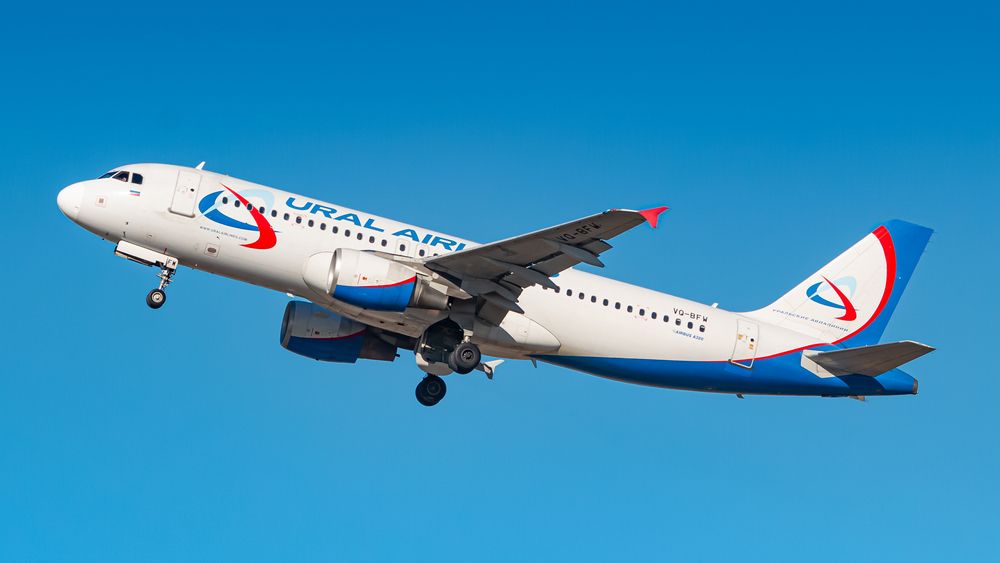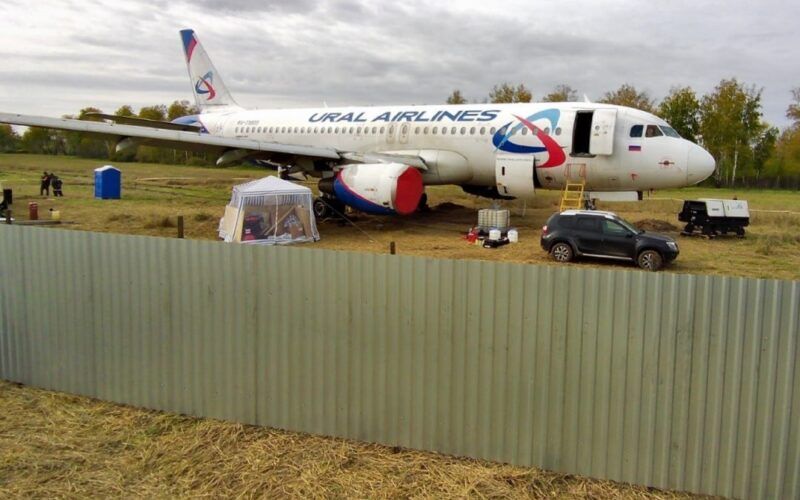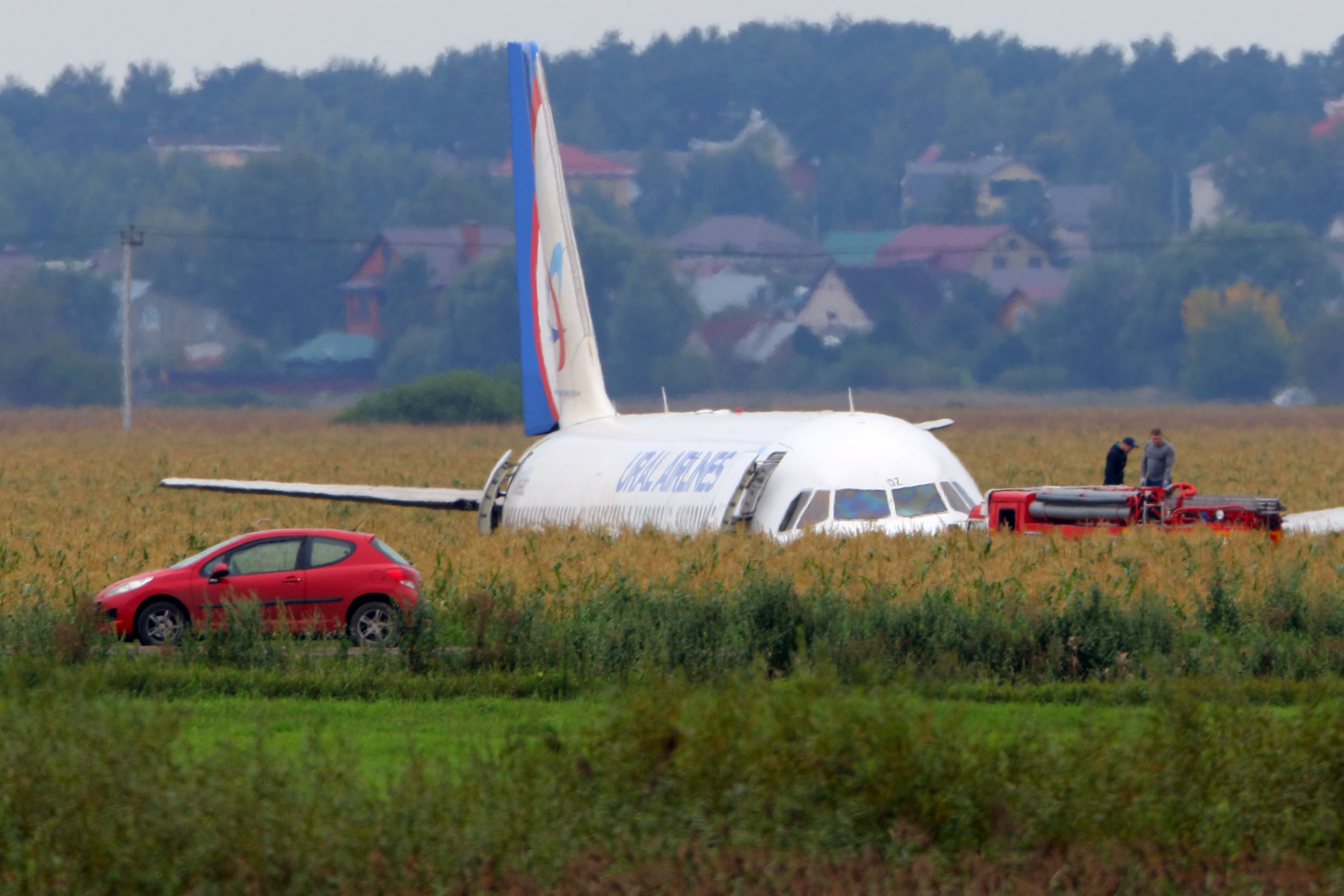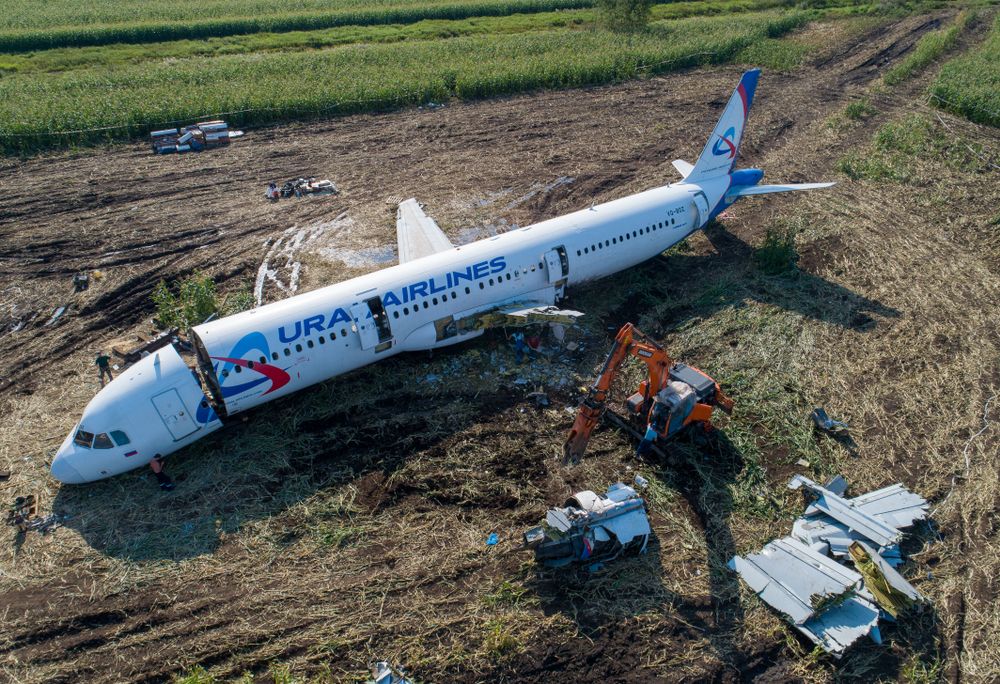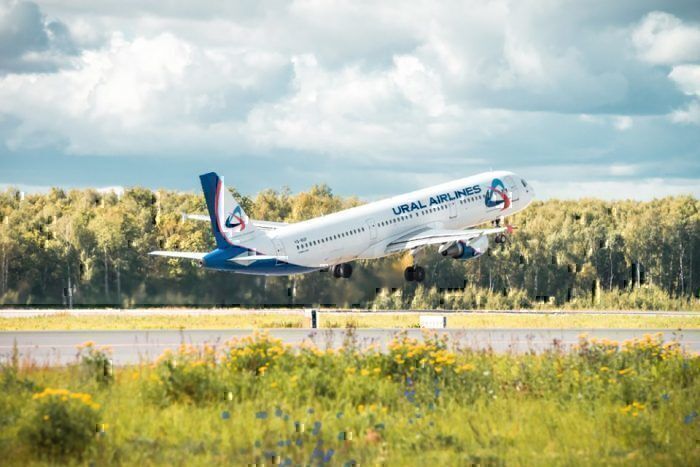Summary
- Ural Airlines plans to fly a stranded Airbus A320 out of a field where it made an emergency landing. The recovery operation faces challenges, and its success remains uncertain.
- The airline has conducted tests on the aircraft’s engines, confirming that they don’t require maintenance refurbishment, although further tests and inspections are planned.
- The recovery process involves examining the aircraft structure, preparing it for temporary storage, and removing the seats to reduce weight. The airline advises that it may take several months to remove the aircraft from the field
Ural Airlines is preparing to fly an Airbus A320 out of the field in which it made an emergency landing last month. It will be the first time that any such recovery has been tried, yet many questions remain about how it ended up in the field to start with and whether the recovery operation can be successful.
An unconventional departure
Russian carrier Ural Airlines has confirmed its plans to attempt to fly a stranded Airbus A320 from the field in which it performed an emergency landing on September 12, 2023. The airline has taken to its Telegram channel this week to post various photos of preparatory work taking place on the plane, along with a comment that various options are available.
Photo: Ural Airlines
Ural Airlines has confirmed that tests carried out on the aircraft’s two CFM International CFM56 engines had shown that they “will not require refurbishment.” The carrier also stated that following its unconventional landing location, the engine flow section has been “cleared of soil and straw, which was confirmed by repeated inspection.”
The airline also revealed that it is currently awaiting the arrival of lifting gear so that the aircraft can be raised to “carry out landing gear testing, testing of components and additional studies of the aircraft design.”
The statement ends by confirming that “an in-depth examination of the aircraft structure and preparation for storage is being carried out. The plan also includes dismantling the seats to make the aircraft lighter,” it adds.
Ural Airlines has previously indicated that removal/recovery of the aircraft from the field could take several months (possibly until the ground freezes during the coming winter months). That work is already underway to place the narrowbody twinjet in temporary storage in its current location.
Why is there an A320 in a field?
As previously reported by Simple Flying, the 17-year-old Ural Airlines A320 with registration RA-73805 was operating flight U6 1383, a domestic flight from Sochi (AER) to Omsk (OMS), Russia, when it suffered a reported hydraulic failure on the approach to its final destination. The flight had 165 passengers and crew onboard.
Following the execution of a missed approach, or ‘go around,’ the crew climbed the aircraft back up to 18,000ft and subsequently elected to divert to Novosibirsk Airport (OVB), which has a longer runway that would facilitate a landing possibly without the use of brakes and spoilers, among other systems.
The crew’s initial calculations indicated that the aircraft would have had enough fuel to reach the alternative airport. However, with the crew being unable to retract the main landing gear doors due to the hydraulic failure this increased the fuel consumption during the diversion, an issue exacerbated by stronger-than-predicted headwinds during the flight.
After realizing they could not make it to Novosibirsk, the crew landed in the wheat field with the landing gear extended. The location is reportedly on the outskirts of Kamenka, a rural village about 180 km (110 mi) from Novosibirsk.
Possibly wider issues involved
It has been widely speculated that the incident occurred due to Russian airlines having difficulty sourcing spares for their civil aircraft due to Western sanctions imposed after Russia’s invasion of Ukraine in February 2022. However, Ural Airlines has denied facing such an issue or using any non-certified spare parts to keep its fleet in the air.
However, this incident is not the first of its type to befall Ural Airlines.
Photo: Fasttailwind / Shutterstock
A similar incident occurred in August 2019 when another Ural Airlines-operated aircraft landed in a cornfield near Moscow. The Airbus A321 involved in that incident suffered a dual-engine failure following a bird strike. In that case, the aircraft sustained substantial damage and was eventually disassembled in the field where it landed.
Thankfully, all passengers and crew survived, and the captain was considered a hero. However, like the more recent incident, experts suggested that the pilots could have handled the situation differently and that, in both cases, better decision-making at crucial points in both flights could have avoided the off-airport landings.
Photo: Dmitry Serebryakov / Shutterstock
What are the chances?
An attempt to fly a large passenger plane out of a wheat field has never been attempted. Given this to be the case, the aviation world is watching keenly to see how the recovery operation progresses.
Any attempt at a take-off would be fraught with difficulties and dangers, even with minimal fuel and with the seats (and possibly other parts of the interior) removed. Firstly, the engines could ingest foreign objects, potentially causing damage and a possible loss of power.
Photo: Ural Airlines
Secondly, additional friction from the unpaved surface could drastically increase the take-off distance required as the aircraft struggles to gain speed to become airborne.
Lastly, the rough ground could cause the gear to collapse, which would undoubtedly end the recovery attempt and possibly the life of the aircraft if any damage sustained proves too costly to repair.
What are your thoughts on the plans to fly the A320 out of the field? Let us know your views in the comments.

